Does Deadlift Work Lower Back?
Author:
Reviewed by:
(21 years of Oly Lifting experience)
Unlock your full potential by engaging with our experts and community! Have questions about your fitness journey or looking for expert advice on weightlifting techniques? Don’t hesitate — leave a comment below and Sergii Putsov will provide a personalized answer and insights to help you reach your goals.
Torokhtiy is reader-supported. Some links are affiliate links, and we may earn a commission at no extra cost to you. See our disclosure page for details.
Deadlifts work your posterior chain which consists of your hamstrings, quads, glutes, erector spinae, lats, and trapezius. Other synergist and accessory muscles also contribute when performing the correct deadlift technique.
With different deadlift variations changing the degree to which muscle groups are recruited, do deadlifts work your lower back? Which variations work which muscles? I’ve discussed this below.
Do Deadlifts Work Your Lower Back? Deadlifts engage the whole posterior chain which includes your lower back. The degree of activation depends on the movement portion and deadlift variation being performed. Lower back pain when deadlifting can be caused by poor technique or loading too much weight on the bar.
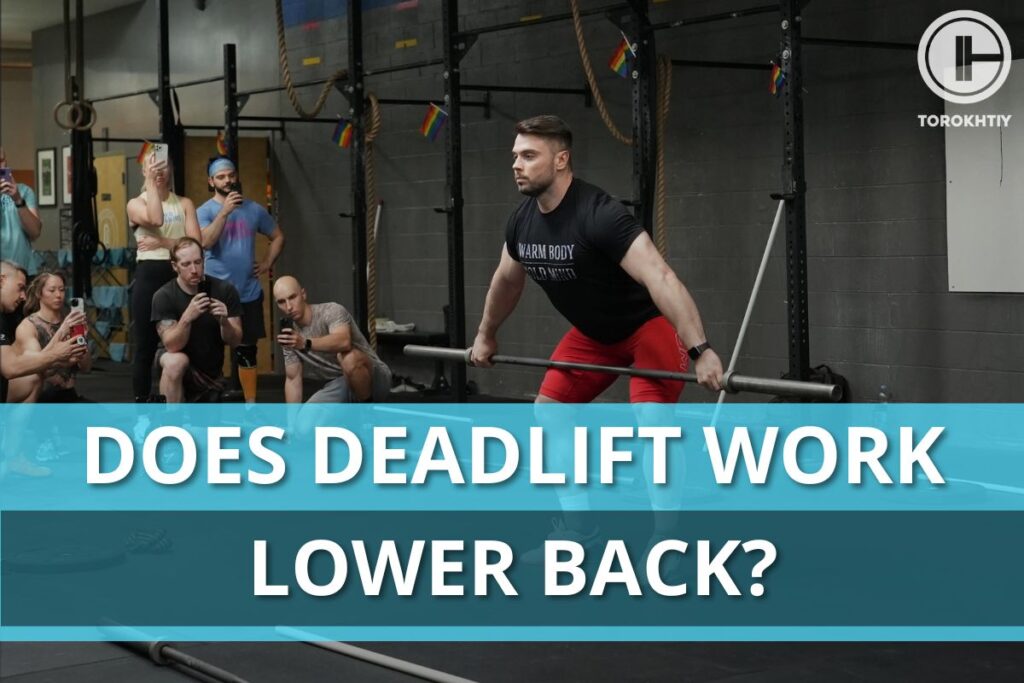
What Is a Deadlift?
Before I talk about deadlifts and lower back health, we need to look at the biomechanics of the deadlift movement and which muscles are used. Deadlifts are classed as a compound movement meaning you need to use a large number of muscle groups to perform the exercise correctly. They involve picking a weighted barbell up off the floor and pulling it up your body until your legs and extended and the barbell is in line with your torso.
Whilst they sound fairly simple, deadlifts require your body to go through several movement patterns, with your muscles working together to keep your body aligned correctly. Let’s take a look at the deadlift movement in more detail and what muscles are involved:
During the deadlift movement, the following joint actions occur:
- Hip Extension (Driving through the hips)
- Knee Extension (Straightening the knees)
- Shoulder Retraction (Bringing the shoulders backward)
The hip and knee extension are the primary movements used during the deadlift, with shoulder retraction classed as secondary. Both these movements engage the leg and back musculature to different degrees depending on the deadlift variation being performed.
The muscles worked during the deadlift include the:
- Erector Spinae
- Hamstrings
- Glutes
- Quadriceps
- Latissimus Dorsi
- Trapezius
- Rhomboids
- Abdominals and Obliques
Performing a deadlift correctly requires each of the muscle groups above to work together. Each muscle group will be activated at varying degrees at different stages of the lift, with deadlift variations changing this as the movement pattern differs.
At the bottom portion of the deadlift, you pull the barbell off the floor. Whilst it requires most of your upper and lower body to work together, the quads are primarily responsible for driving the barbell off the floor.
As you pull the bar upwards, your hamstrings and glutes start to work together to extend your hips slightly as you bring the barbell toward your knee.
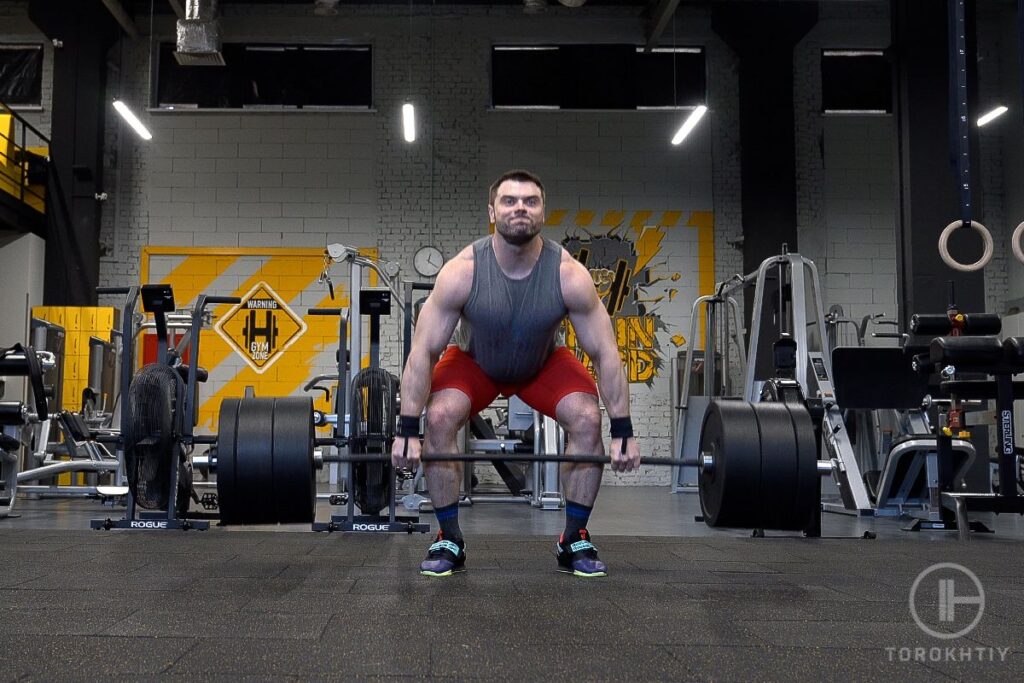
As the barbell comes over your knees, your glutes, quads, and hamstrings work together, so you’re able to extend your knees and drive through your hips to pull the bar up your body.
Your abdominal and oblique muscles work to keep your core braced throughout the movement, creating intraabdominal pressure and allowing you to maintain a neutral spine when lifting. Your lats help to keep the barbell close to your body and alongside the erectors, prevent upper back rounding which can cause injury.
With this, do deadlifts work your lower back muscles? What do your lower back muscles do?
Erector Spinae
The erector spinae muscles, more commonly known as your lower back muscles, run along the outside of your spine. They extend along the lumbar, thoracic, and cervical spine sections. They make up part of your lower back region and provide spinal protection.
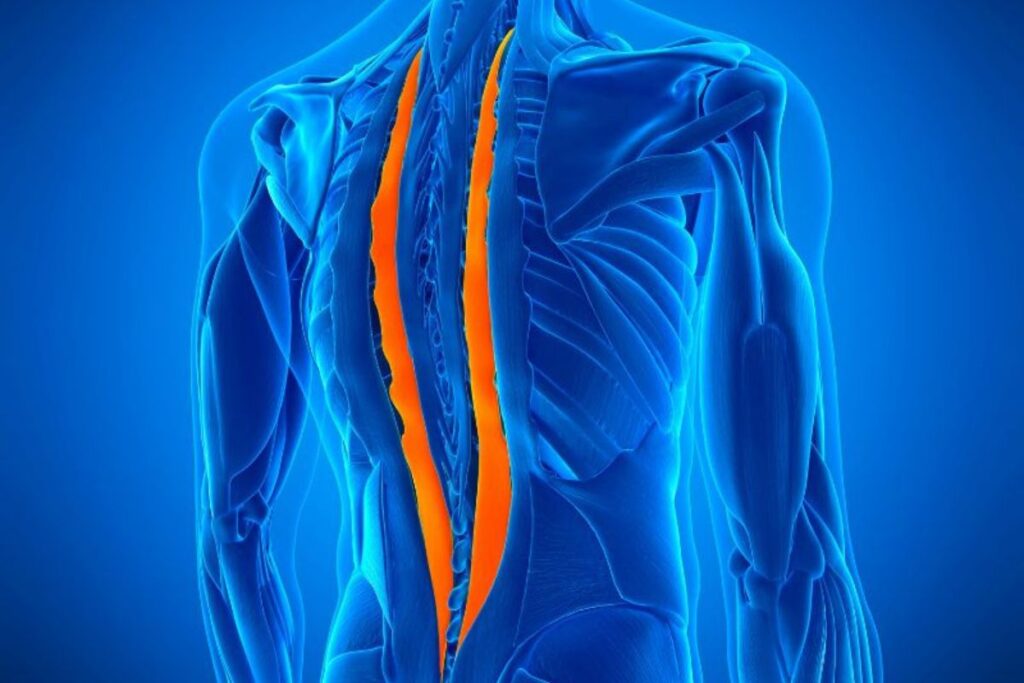
During the deadlift, the erectors keep your back flexed and extended, preventing it from rounding and leading to possible injury. Maintaining a stable spine under tension is important to not place too much stress on the spinal column if it needs to take most of the weight.
The erectors also help with back extension, allowing the spine to move to an upright position as the barbell comes off the floor. Depending on the deadlift variation, starting in a more horizontal position will recruit more of the erector muscles.
Follow us!

Free!
Get a 2-week Weightlifting Program as a bonus for the subscription to kickstart your training plan!

Free!
Are Deadlifts Good for Lower Back Health?
When performed correctly, deadlifts are great exercises for improving lower back health and preventing possible injury. Here’s why:
Deadlifts Strengthen Your Spine
The external load provided when deadlifting creates stress on our lower back musculature and lumbar spine region. Our bodies are highly adaptable and able to handle large amounts of compression forces placed upon them. They are designed to change, allowing us to deal with the stress and learn how to overcome it.
As our bodies adapt to stress, the tissue changes result in a stronger lower back which includes our lumbar spine and erector spinae muscles surrounding it. This also translates into better functional movement patterns such as carrying household objects or bending down to pick something up.
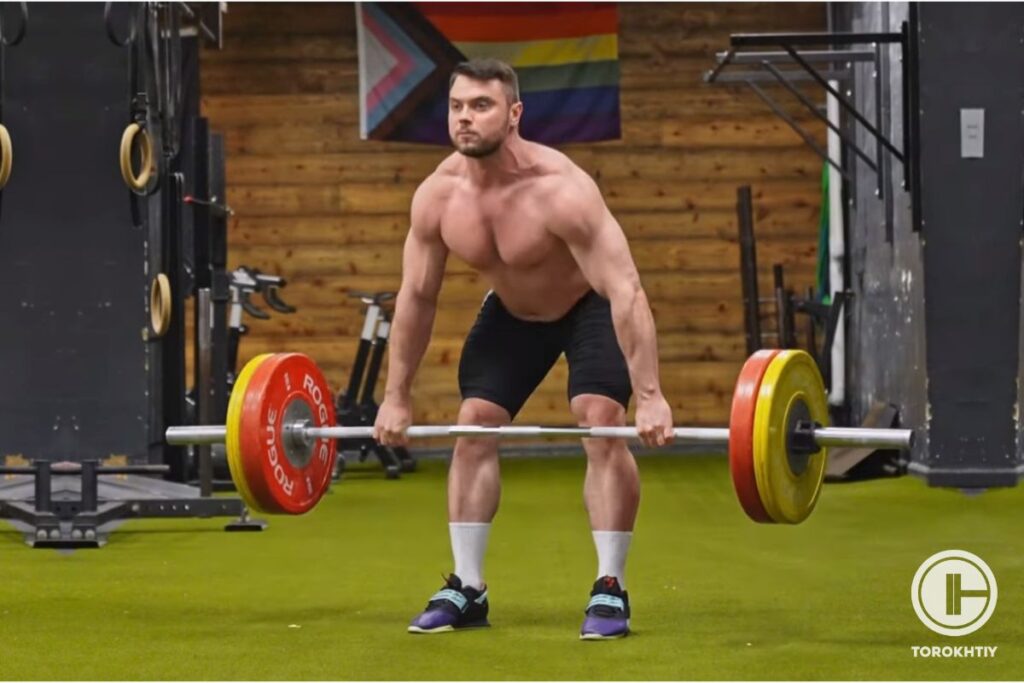
Deadlifts Develop Our Posterior Chain
Having a strong posterior chain is extremely important to maintain good lower back health whether you’re in the gym or performing daily activities at home or work. Building stronger glute and hamstring muscles through deadlifting increases our ability to handle heavier loads and takes stress off the lower back musculature when lifting from the ground.
Correct Deadlifting Can Provide Back Rehabilitation
When performed correctly, deadlifting can improve back pain, mobility, and function. Focusing on performing a correct hip hinge whilst engaging your posterior chain correctly can help to promote correct movement patterns and therefore decrease pain incidence.
How do Different Types of Deadlifts Affect Your Lower Back?
Different deadlift variations place different stress on your lower back due to the starting position and different movement planes used. So, do Romanian deadlifts work your lower back? What about the other deadlift variations?
Leg-focused deadlift variations include sumo deadlifts, deficit deadlifts, and trap bar deadlifts. Sumo deadlifts are performed with your legs outside your arms, placing a higher amount of stress on your quads and adductor muscles rather than your lower back.
Deficit deadlifts start with an elevated foot position, placing more stress on your hamstrings, quads, and glutes. Lower back activation is similar to conventional deadlifts. Trap bar deadlifts use a higher starting position, recruiting the quads more and placing less stress on your lower back. They are great for people who suffer from lower back pain.
Back-focused deadlift variations include snatch grip deadlifts and stiff leg deadlifts. Snatch grip deadlifts are where you use a wide barbell grip, which puts you in more of a bent-over starting position. This places more stress on your lower back muscles.
So, do stiff leg deadlifts work your lower back? They involve less knee flexion, with the higher hip position and parallel back placing more stress on your glutes, hamstrings, and lower back.
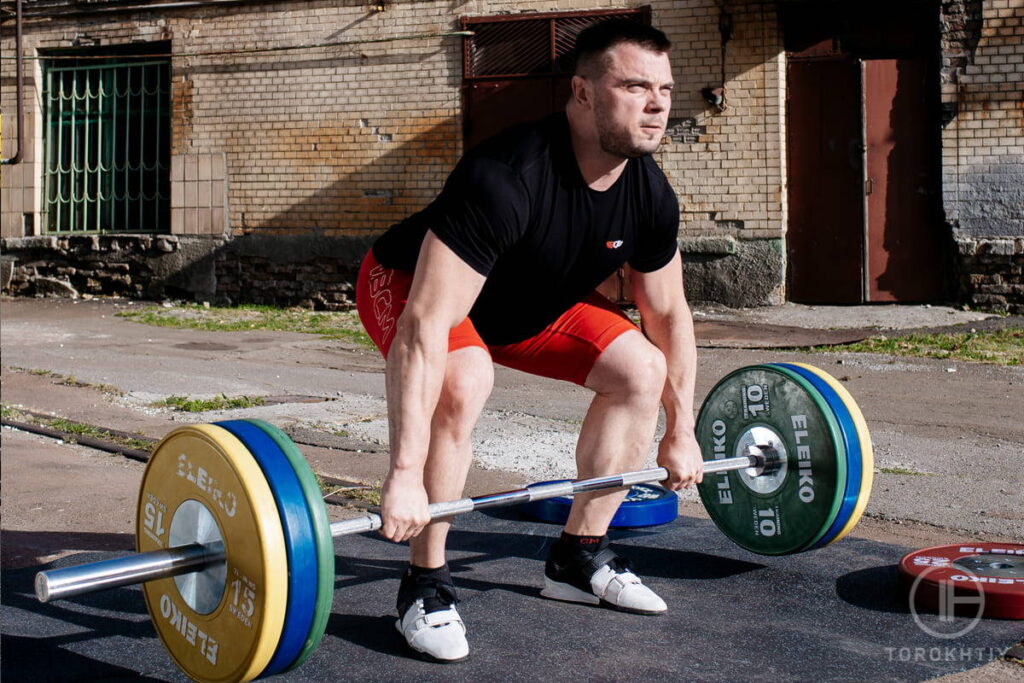
What Causes Back Pain When Deadlifting?
As deadlifting places significant stress on your spine region, it’s normal to feel sore after lifting. However, excessive soreness or pain may be a sign that you’re doing something incorrectly. Here are some of the possible causes:
Lower Back Arching – This is one of the most common mistakes made when deadlifting. It’s also known as rounding the lower back and puts excessive strain on your lumbar spine region, leading to pain.
Early Hip Drive – If your hips come up before the rest of your body, you’re driving them too early. This often results from too much weight on the barbell or an incorrect starting position. Driving your hips too early places more stress on your lower back, increasing the risk of pain and injury.
Incorrect Bracing – To maintain a neutral spine, you need to create enough intra-abdominal pressure to keep your core strong and posterior chain correctly aligned. Incorrect bracing may lead to the wrong lifting position, placing more stress on your back.
Lack of Barbell Control – Using a small amount of momentum when lifting is okay if done correctly. Control needs to be maintained when lifting the barbell up and down, not just up. Make sure to maintain a tight body position when lowering the barbell under control. Unnatural jerking movements when lowing the bar may lead to back injuries as you come out of an unnatural lifting position.
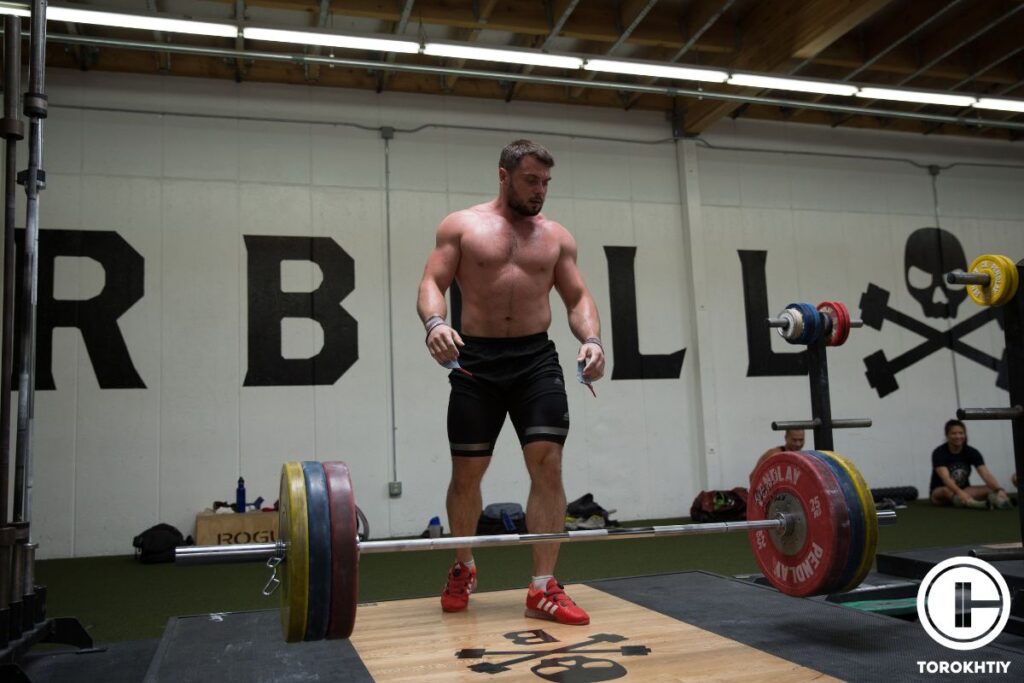
Correct Deadlifting Can Provide Back Rehabilitation
Having a strong posterior chain is extremely important to maintain good lower back health whether you’re in the gym or performing daily activities at home or work. Building stronger glute and hamstring muscles through deadlifting increases our ability to handle heavier loads and takes stress off the lower back musculature when lifting from the ground.
If you’re not a huge fan of deadlifts or fancy a different exercise, the following exercises are suitable deadlift alternatives:
FAQ
What Part of the Back Do Deadlifts Work?
Deadlifts work your whole posterior chain which consists of your upper and lower back. Back muscles recruited during the deadlift movement include your trapezius, latissimus dorsi, erector spinae, and lower back muscles.
Each muscle works together to support your spine and trunk musculature and activate at varying degrees during the movement.
Which Deadlift Variation Is the Best for Your Lower Back?
Straight leg deadlifts are performed with a minimal knee hinge, meaning most of the load is transferred to your lower back region. This makes them ideal for those with stronger hamstrings and glutes but a weaker lower back.
Where Should You ‘Feel’ Deadlifts During the Lift?
Deadlifts are classed as a compound movement, meaning they work the full body. The main muscles worked are part of the posterior chain which includes your glutes, hamstrings, lats, and lower back.
The muscles felt during the deadlift vary depending on the variation performed and your training level. If you’re a beginner, you’ll likely feel it more in the lower back region to start.
Do Hex Bar Deadlifts Work Your Lower Back?
Hex bar deadlifts engage the same muscles as conventional deadlifts. However, due to the higher starting position, they place more stress on your quads and less on your lower back area.
Conclusion
Deadlifts work your whole posterior chain, which includes your lower back muscles. The degree of lower back muscle activation depends on the deadlift variation performed, with snatch grip and stiff leg deadlifts being more back-dominant movements.
Back pain when deadlifting is caused by incorrect technique which may result from too much weight being loaded on the bar or lack of knowledge.
Do you feel your lower back when deadlifting? Have you ever experienced lower back pain? Let’s talk about it in the comments section below.
Also read:
- Is Sumo Deadlift Easier
- Rack Pull vs Deadlift
- Functional Fitness Deadlift
- What Muscles Does Deadlift Work
- Sumo Deadlift vs Deadlift
- Deadlift Hand Position
- Rack Pull vs Deadlift
- Deadlift Program
- Squat and Deadlift Same Day: Right or Wrong?
References:
- Kinematic Differences Between the Front and Back Squat and Conventional and Sumo Deadlift // Journals: https://journals.lww.com/nsca-jscr/Fulltext/2019/12000/Kinematic_Differences_Between_the_Front_and_Back.2.aspx
- Conventional vs. Sumo vs. Hex Bar Deadlift: What’s the Difference? // BarbellRehab: https://barbellrehab.com/deadlift-variations
- 10 Deadlift Alternatives to Consider // Healthline: https://www.healthline.com/health/fitness-exercise/deadlift-alternative
- Genes and Athletic Performance: An Update // NCBI: https://pubmed.ncbi.nlm.nih.gov/27287076/
- Muscle fatigue: general understanding and treatment // NCBI: https://www.ncbi.nlm.nih.gov/pmc/articles/PMC5668469/
- Posterior Chain: Which Deadlift Variation Is the Best? // Strengthlog: https://www.strengthlog.com/posterior-chain-which-deadlift-variation-is-the-best/
Why Trust Us?
With over 20 years in Olympic weightlifting, strength training, nutrition coaching, and general fitness our team does its best to provide the audience with ultimate support and meet the needs and requirements of advanced athletes and professional lifters, as well as people who strive to open new opportunities and develop their physical capabilities with us.
By trusting the recommendations of our certified experts in coaching, nutrition, and sports training programming, as well as scientific consultants, and physiotherapists, we provide you with thorough, well-considered, and scientifically proven content. All the information given in the articles concerning workout programming, separate exercises, and athletic performance, in general, is based on verified data.
The product testing process is described in more detail here.
Author: Sergii Putsov
Head of Sport Science, PhD
Best Results: Snatch – 165 kg,
C&J – 200 kg
Sergii Putsov, Ph.D., is a former professional weightlifter and National team member, achieving multiple medals in the 94 kg weight category at national competitions. With a Master’s degree in “Olympic & Professional Sport Training” and a Sport Science Ph.D. from the International Olympic Academy, Greece, Sergii now leads as the Head of Sport Science. He specializes in designing training programs, writing insightful blog articles, providing live commentary at international weightlifting events, and conducting educational seminars worldwide alongside Olympic weightlifting expert Oleksiy Torokhtiy.
Reviewed by: Oleksiy Torokhtiy
Olympic Weightlifting Champion, PhD in Sport Science
Best Results: Snatch – 200 kg,
C&J – 240 kg
Oleksiy Torokhtiy is a professional athlete boasting 20 years of experience in Olympic weightlifting. With multiple European and World titles under his belt, he has showcased his prowess in two Olympic Games (Beijing 2008 and London 2012). Upon concluding his illustrious career, Oleksiy dedicated himself to coaching. By 2022, he had conducted over 200 weightlifting seminars worldwide. He is the visionary behind an international sportswear and accessories brand known for its motto, “Warm Body Cold Mind.” Additionally, he is an esteemed author and the creator of a series of training programs and eBooks.




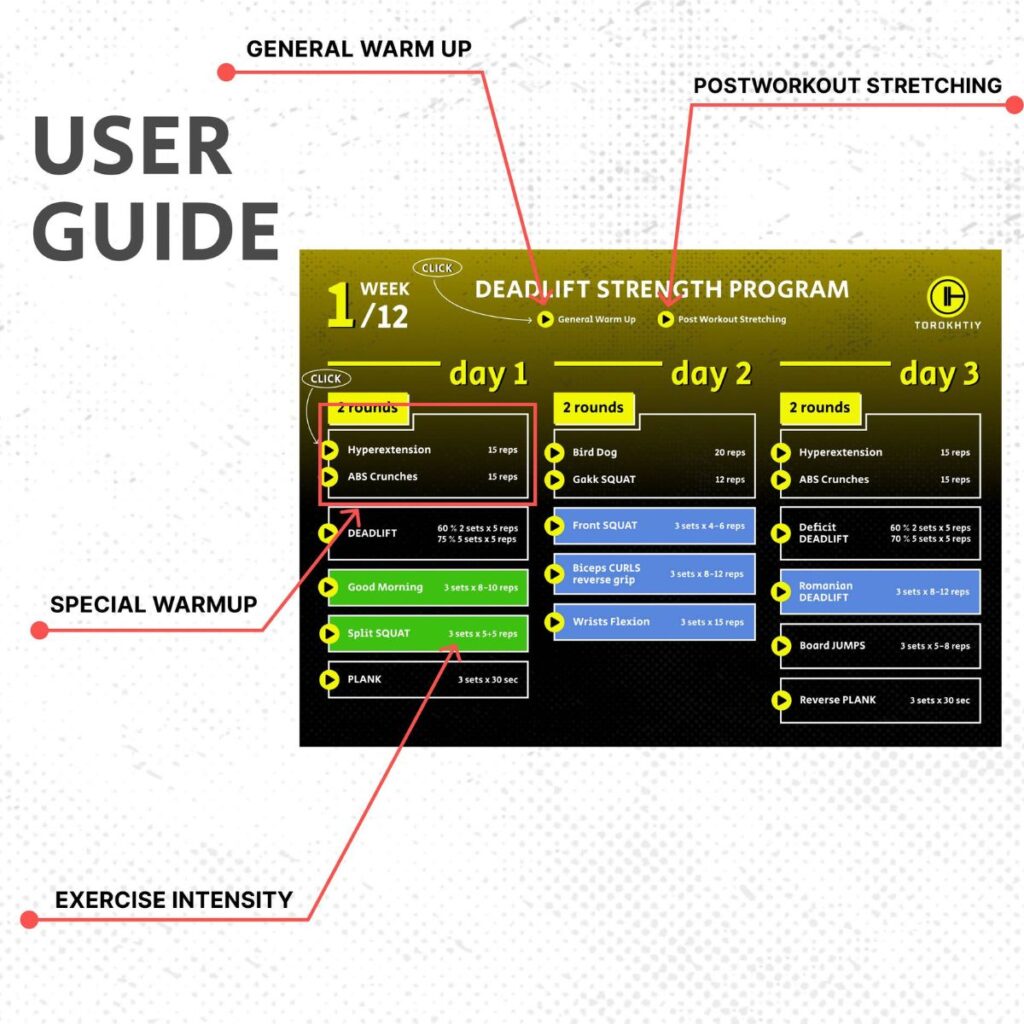
Still have questions after reading our article? Unlock your full potential by engaging with our experts and community! Don’t hesitate — leave a comment below and Sergii Putsov will provide a personalized answer and insights to help you reach your goals.